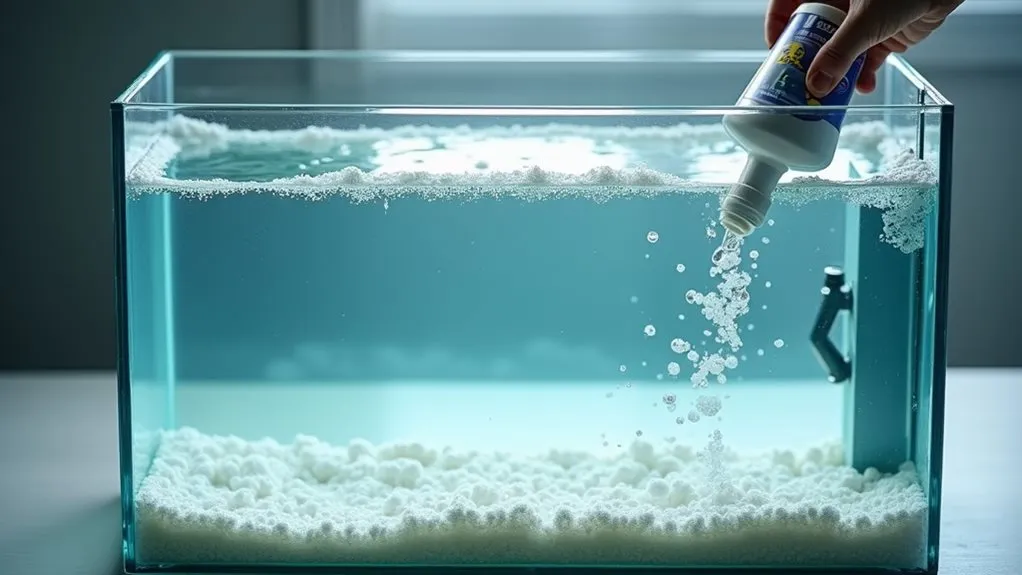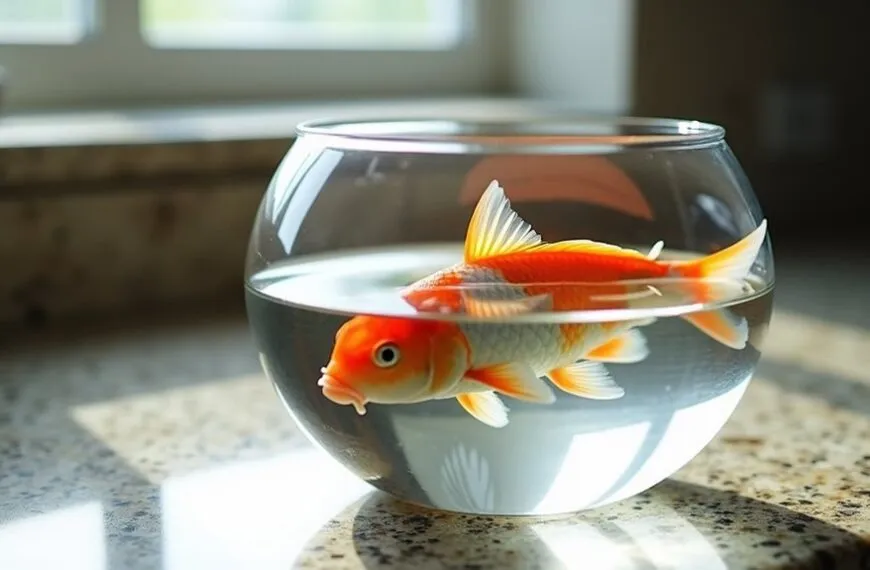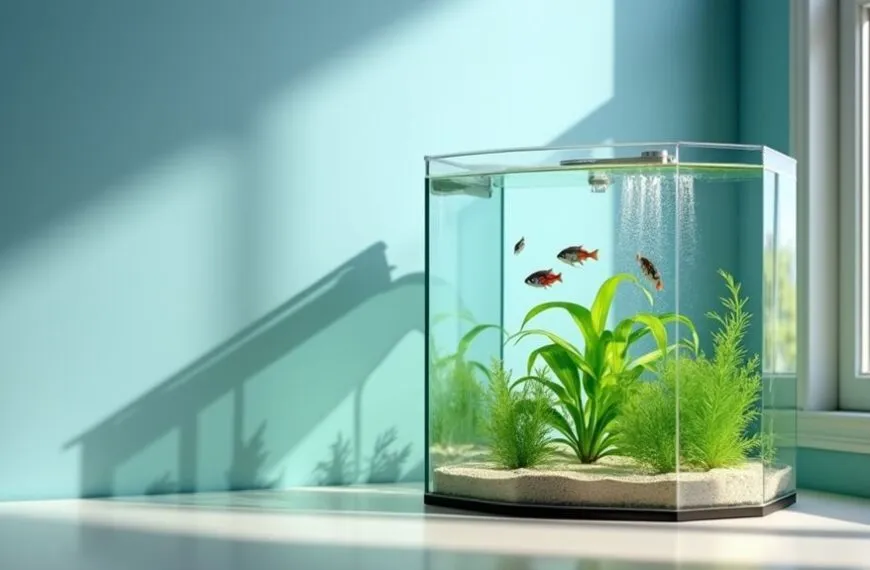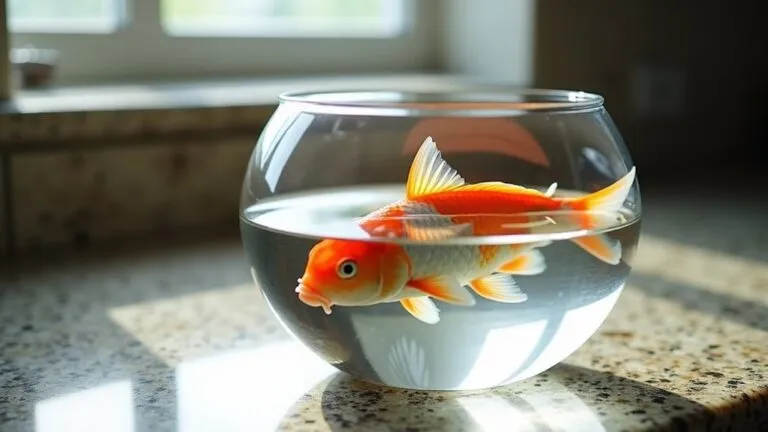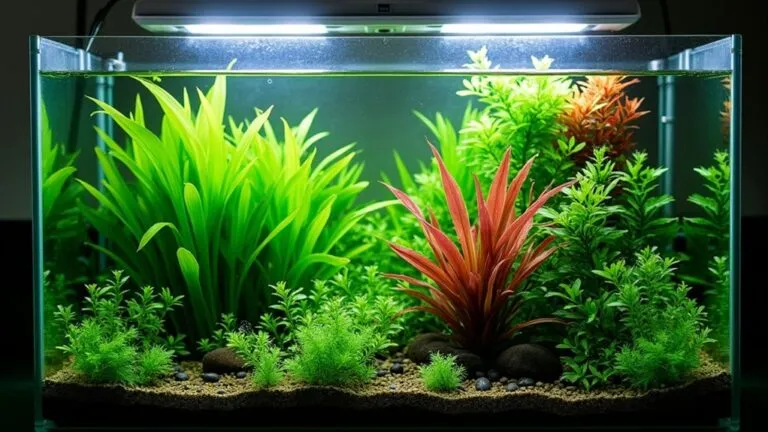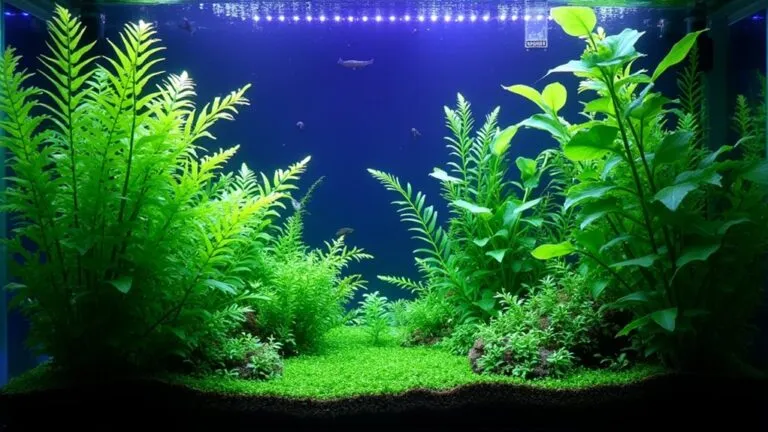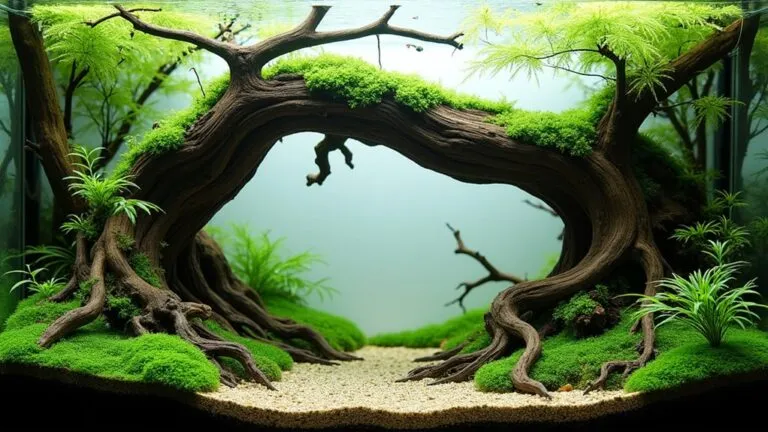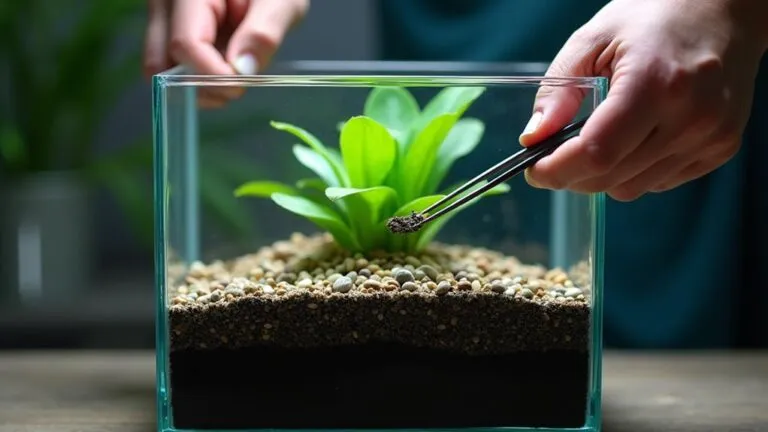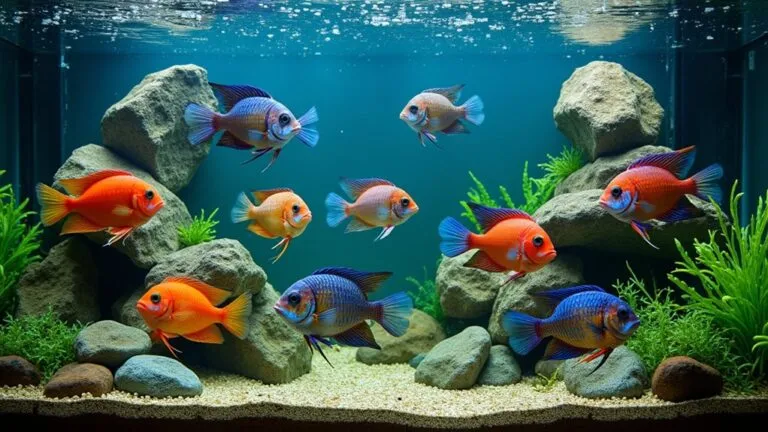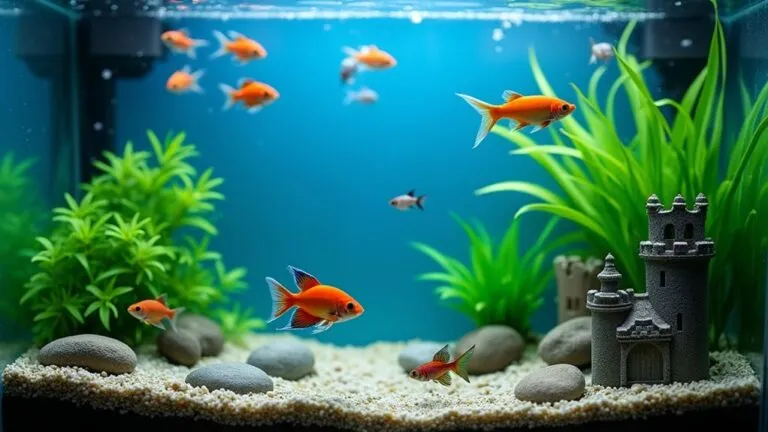While Quick Start bacteria products help jumpstart your aquarium's nitrogen cycle, you shouldn't add fish immediately. Even with these helpful bacteria, your tank needs 4-5 days to establish a stable environment. During this time, you'll want to monitor your water parameters daily, especially ammonia and nitrite levels, to verify they're safe for your future finned friends. Start with just a few hardy fish once your parameters check out, and gradually add more over time. Following these steps will help you create a thriving aquatic home that both you and your fish will love. There's much more to discover about setting up your perfect underwater world.
Contents
- 1 Understanding Quick Start Bacteria
- 2 The Reality of Instant Fish
- 3 Safe Fish Loading Guidelines
- 4 Water Parameter Testing Requirements
- 5 Fish Selection for New Tanks
- 6 Managing Ammonia and Nitrite Spikes
- 7 Common Quick Start Mistakes
- 8 Best Quick Start Practices
- 9 Frequently Asked Questions
- 9.1 Does Quick Start Expire if Stored for Too Long?
- 9.2 Can Quick Start Be Used With Other Bacterial Supplements Simultaneously?
- 9.3 Will Quick Start Affect Aquarium Plant Growth?
- 9.4 Does Temperature Affect Quick Start's Bacterial Colonization Rate?
- 9.5 Can Quick Start Help Recover Beneficial Bacteria After Medicating the Tank?
- 10 Final Thoughts
Understanding Quick Start Bacteria
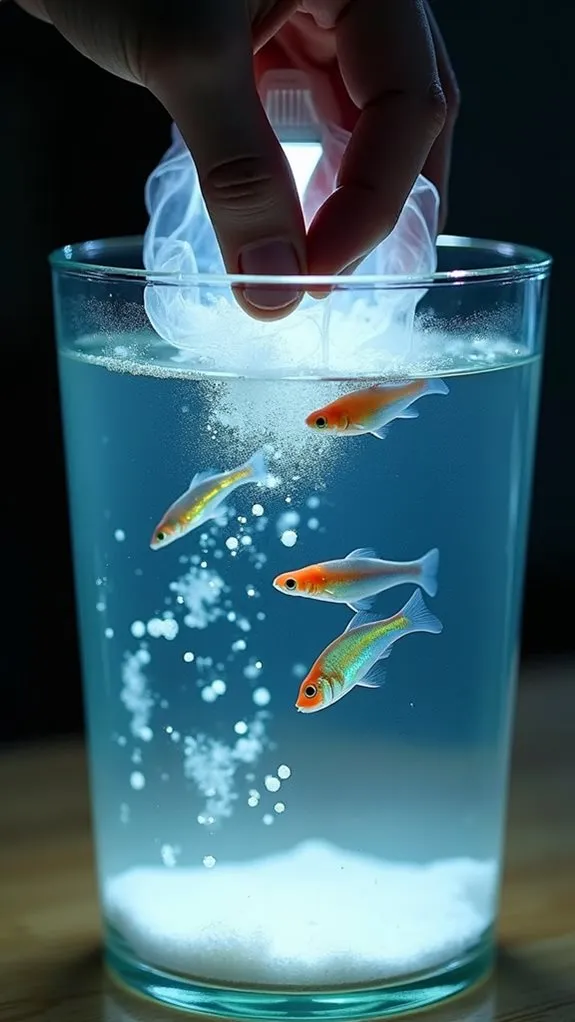
Aquarium enthusiasts often turn to Quick Start bacteria as their secret weapon for cycling new tanks. This powerful solution contains live nitrifying bacteria that kick-start your aquarium's biological filtration system, making it safer for your finned friends. Water treatment chemicals must be used to remove chlorine before adding Quick Start. The process typically takes 4 to 6 weeks for complete cycling, and during this time, it's essential to monitor water parameters to ensure a stable environment.
You'll be amazed at how these helpful microorganisms get straight to work, converting harmful ammonia into less dangerous compounds. The bacteria benefits are truly remarkable when you understand how the nitrifying process works. It's like having a tiny cleanup crew working 24/7 in your tank! The Nitrosomonas bacteria first tackle the toxic ammonia, transforming it into nitrite. Then, their partners in crime, the Nitrobacter, step in to convert that nitrite into harmless nitrate. Establishing a stable nitrogen cycle is critical for long-term tank health.
It's a fascinating two-step dance that keeps your aquarium water clean and fish-friendly. You can use Quick Start in both freshwater and saltwater tanks, and it's perfect for various situations – whether you're setting up a new aquarium, doing water changes, or adding new fish to your existing setup.
The best part? You're adding 10ml per 10 gallons, and these beneficial bacteria get to work immediately!
The Reality of Instant Fish
You might've heard of "Instant Fish" products that promise immediate aquatic pets, but the reality isn't quite that simple. These products, marketed as an educational toy, seemed magical: just add water to dormant fish eggs, and within hours, you'd have swimming companions! Using clear bullet points in educational materials would help explain the proper setup process more effectively.
While millions of people were captivated by this idea, the results often fell short of expectations. The concept was clever, using killifish species that naturally survive dormancy periods of up to nine months. However, there's a big difference between nature's process and trying to recreate it in your living room. Jean W. Fimer and her team had to establish a dedicated breeding facility for killifish to address the numerous survival challenges.
Many customers found their eggs wouldn't hatch, and when they did, the tiny fish often didn't survive long. The main problem? These products didn't account for proper water conditions that fish need to thrive. Successful fishkeeping involves establishing beneficial bacteria to ensure a healthy aquarium environment, which these quick-fix products often overlooked.
While the idea of instant fish was exciting, especially for teaching kids about fish life cycles, it's a perfect example of why proper aquarium cycling matters. You can't rush nature, and successful fishkeeping requires patience, proper setup, and understanding of basic aquarium principles – something these quick-fix products often overlooked.
Safe Fish Loading Guidelines
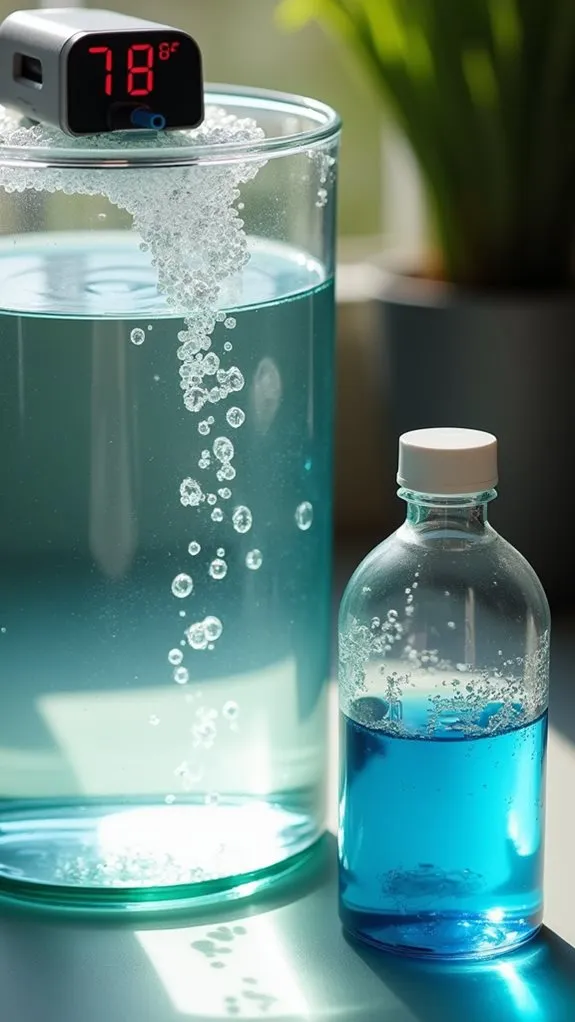
When it comes to adding fish, understanding safe loading guidelines prevents overcrowding and guarantees a healthy environment for your aquatic pets.
You'll need to research fish species compatibility and tank size requirements before making any purchases, as each species has unique needs that must be met for their well-being.
Start by choosing community fish that'll get along well together, and remember that schooling fish need groups of at least 6-10 to thrive. Active swimmers tend to need significantly more space than ambush predators. Additionally, ensure that your tank is properly cycled to maintain an appropriate ammonia level and support healthy fish.
If you're eyeing those playful zebra danios, they'll need extra swimming space despite their small size. Your tank's size should accommodate your fish at their full adult size – it's like buying kids' clothes with room to grow!
When adding new fish, take it slow and steady. Monitor your tank's nitrate levels, keeping them below 40 ppm, and maintain regular water changes. Adding aquatic plants to your setup can help maintain water quality by consuming fish waste.
Using cycled media or beneficial bacteria products like Seachem Stability can help, but don't skip testing your water parameters.
Think of it as creating a balanced neighborhood – you wouldn't want to crowd too many residents into one space too quickly!
Water Parameter Testing Requirements
Before introducing any fish to your tank, proper water parameter testing stands as your first line of defense against potential problems.
You'll need to monitor several essential elements to guarantee your aquatic friends will thrive in their new home. Start by checking your pH levels, which should remain stable, and make certain your ammonia and nitrite readings are at safe levels – ideally near zero. Having pre-mixed saltwater ready for water changes can help quickly address any parameter issues. Regular monitoring of nitrate levels is vital to prevent fish stress and illness.
For regular water testing, you've got two main options: test strips or drop tests. While strips are convenient for quick checks, drop tests typically provide more accurate results. Conducting regular testing helps prevent aquatic diseases and maintains optimal living conditions.
You'll want to test daily during the first few weeks, as parameter fluctuations are common in new tanks. Keep a log of your readings – trust me, you'll thank yourself later when tracking trends becomes important!
Focus on maintaining proper levels of nitrate (3-10 ppm) and alkalinity (7-12 dKH).
If you're setting up a saltwater tank, don't forget to monitor salinity too.
Fish Selection for New Tanks
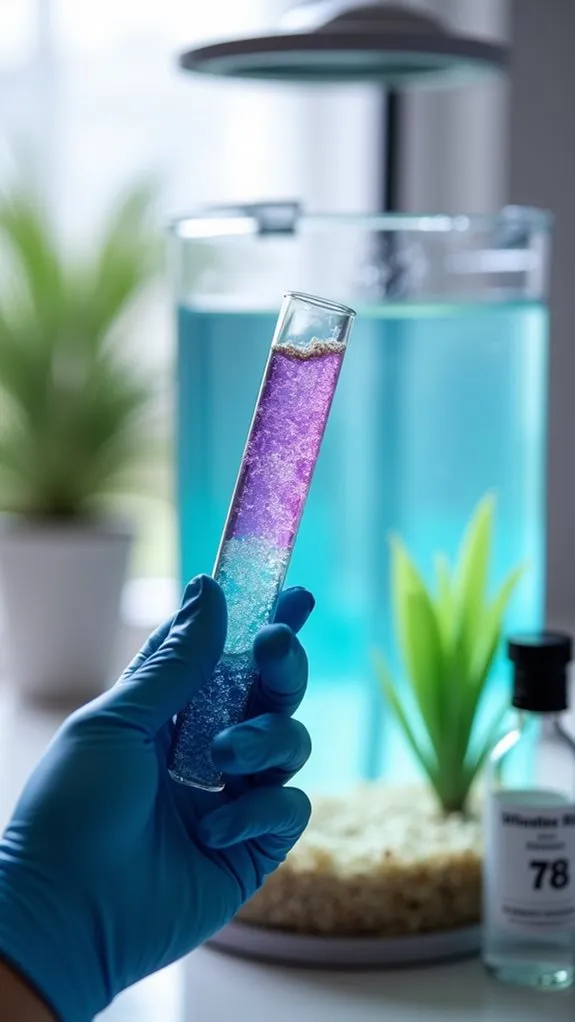
Selecting the right fish for a new aquarium can make or break your success as a beginning aquarist. When you're starting out, you'll want to focus on compatible fish that can handle the ups and downs of a cycling tank, and there are several excellent beginner choices that fit the bill perfectly.
Danios are your go-to fish, as they're basically the tough guys of the aquarium world – they'll tolerate varying water conditions while you're getting the hang of things. You might also want to take into account adding some peaceful barbs (just steer clear of the feisty Tiger Barbs), or the ever-reliable White Cloud Mountain Minnows. Start with two or three fish to avoid overwhelming your new tank's ecosystem. Additionally, it's important to ensure you select fish that thrive in groups, as schooling behavior enhances their well-being.
If you're looking for bottom-dwellers, Corydoras are fantastic cleanup crew members that'll help keep your tank tidy. Most Corydoras species stay relatively small at just 1-3 inches in length. They are also sociable creatures that prefer to be kept in groups of at least five.
While it's tempting to stock your tank with colorful tetras or fancy goldfish right away, you'll want to resist that urge. These fish need more stable conditions and aren't suited for new tanks.
Instead, start with hardier species and gradually build your aquatic community as your tank matures. Remember, patience in fish keeping isn't just a virtue – it's a necessity!
Managing Ammonia and Nitrite Spikes
Nearly every new aquarium will experience ammonia and nitrite spikes during its cycling period, which can be lethal to fish.
When you see your fish gasping at the surface or acting lethargic, it's often a sign that ammonia or nitrite levels have risen to dangerous levels. While it's scary to witness, there are effective solutions for both ammonia detoxification and nitrite management.
To handle these spikes, you'll need to act quickly. Start with immediate water changes to dilute the harmful compounds, and use products like Seachem Prime to detoxify ammonia and nitrite.
Don't forget to add beneficial bacteria supplements, which help restore the natural balance in your tank. Think of these bacteria as your tank's cleanup crew – they're essential workers that convert toxic ammonia into less harmful substances.
Prevention is always better than cure, so make sure you're doing regular water changes, avoiding overfeeding, and maintaining your filter properly. Consistently monitoring your water parameters is crucial for preventing serious spikes.
Test your water parameters frequently, and don't skip those partial water changes – they're like giving your fish a refreshing change of atmosphere!
With proper maintenance and quick action when needed, you can keep your fish swimming happily through any water quality challenges.
Common Quick Start Mistakes
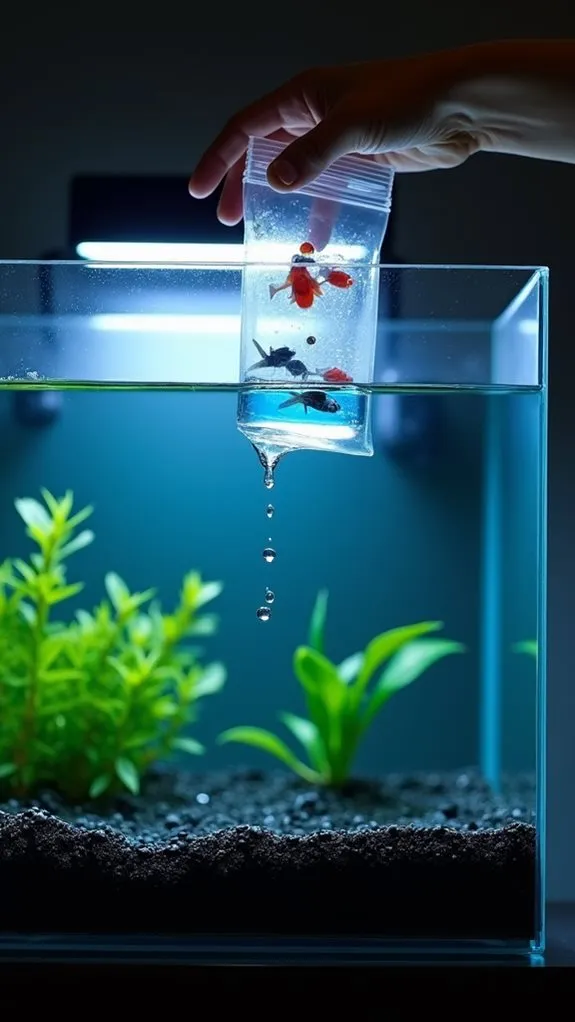
When you're excited to start your aquarium, it's tempting to skip the cycling process and add fish right away, but this common mistake can lead to serious problems for your new aquatic friends.
You'll want to pay close attention to your water test results, as they'll tell you exactly when your tank is ready for its first inhabitants. Testing for ammonia and nitrites isn't just busywork – it's your best guide to ensuring your fish will thrive rather than just survive in their new home. Regular testing helps identify contaminants in the water, which is crucial for maintaining a safe environment for your fish.
Rushing The Cycling Process
During the excitement of setting up a new aquarium, many hobbyists make the critical mistake of rushing the cycling process.
Common cycling misconceptions lead people to believe they can speed up nature's timeline, but the reality is that proper cycling takes 10-14 days without fish, or 4-5 days with a few hardy fish. You can't cheat biology, no matter how enthusiastic you're to add those beautiful fish to your tank!
Trying to accelerate the process often backfires, especially when it comes to ammonia buildup.
If you're tempted to do frequent water changes or use ammonia-removing chemicals, you'll actually slow down the cycling process instead of helping it. Your beneficial bacteria need that ammonia to establish themselves and create a healthy environment for your future fish.
Even if you're using live sand or established filters, you'll need to be patient. Regular monitoring of water parameters is crucial to ensure the cycling process is proceeding effectively.
Think of it like baking a cake – you can't turn up the oven temperature to make it bake faster without ruining the end result.
Your aquarium needs time to develop its biological balance, and rushing it will only lead to problems down the road.
Ignoring Water Test Results
Skipping water tests while using Quick Start products is one of the riskiest mistakes new aquarists make. While it's tempting to trust that Quick Start will handle everything, you're practically driving your aquarium blindfolded if you don't monitor your water quality.
Those test kits aren't just fancy aquarium decoration – they're your early warning system for potential disasters.
Think of your aquarium like a tiny underwater city where water quality directly impacts fish health. When you ignore water testing, you won't know if ammonia or nitrites are reaching dangerous levels until your fish show signs of stress – and by then, it might be too late. Maintaining optimal water parameters can make a significant difference in fish survival during initial tank setup.
You wouldn't want to live in a home filled with toxic fumes, and neither do your fish! Regular testing helps you catch problems before they become emergencies.
Don't let the upfront cost of test kits discourage you. They're a small investment compared to losing your beloved fish or having to restart your tank from scratch.
Best Quick Start Practices
Success with your new aquarium starts with proper preparation and a solid understanding of quick-start practices.
You'll find that setting up your tank properly from day one will save you countless headaches down the road. When it comes to aquarium setup, it's crucial to follow a methodical approach that'll give your future fish the best chance of thriving.
Here are three critical steps you can't skip:
- Install your equipment carefully – let your heater adjust for 30 minutes before turning it on, and position your sponge filter for ideal flow.
- Add dechlorinator to your water before filling the tank, and fill it slowly to protect your substrate arrangement.
- Wait 24 hours after setup to verify there aren't any leaks or equipment issues.
When it comes to cycling methods, you've got two main options: fishless or fish-in cycling.
For beginners, we strongly recommend fishless cycling – it's safer for the fish and gives you more control over the process. While it might take 1-3 months to complete, your patience will be rewarded with a stable, healthy environment for your future aquatic friends. Additionally, regular water changes are essential to maintain optimal water quality and support the well-being of your fish once they are added to the tank.
Frequently Asked Questions
Does Quick Start Expire if Stored for Too Long?
Yes, your Quick Start can expire if stored improperly. While there's no specific shelf life listed, you'll want to store it in a cool, dark place to maintain its effectiveness as a bacterial supplement.
Can Quick Start Be Used With Other Bacterial Supplements Simultaneously?
While you can use Quick Start with other bacterial supplements, it's not recommended due to potential bacterial compatibility issues. Monitor supplement interactions carefully, as combining products may lead to an overabundance of bacteria in your aquarium.
Will Quick Start Affect Aquarium Plant Growth?
You won't see negative effects on plant health when using Quick Start. It actually supports nutrient absorption by maintaining a stable nitrogen cycle and creating beneficial bacteria that contribute to a healthy growing environment.
Does Temperature Affect Quick Start's Bacterial Colonization Rate?
Yes, temperature fluctuations directly impact your Quick Start's bacterial growth rate. You'll see faster colonization in warmer water (77-86°F), while cooler temperatures will slow down the process of beneficial bacteria establishment.
Can Quick Start Help Recover Beneficial Bacteria After Medicating the Tank?
Yes, you can use Quick Start to restore beneficial bacteria after medicating your tank. It'll help replenish your aquarium's biological filtration system, which may have been damaged during treatment. Monitor water parameters during recovery.
Final Thoughts
While Quick Start products can help speed up your cycling process, you'll still need patience and careful monitoring when adding fish. Remember to test your water parameters daily, start with hardy fish species, and add them gradually. Even with bacterial supplements, it's best to wait at least 24-48 hours before introducing fish and maintain a light bioload initially. Your fish will thank you for taking the time to create a stable, healthy environment for them.

